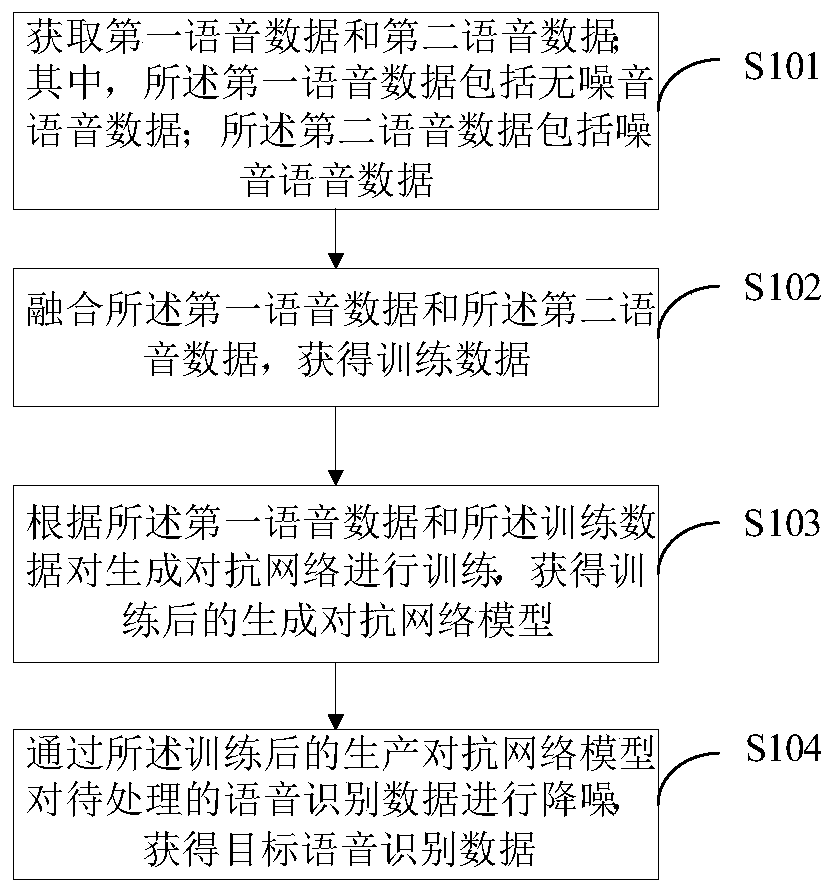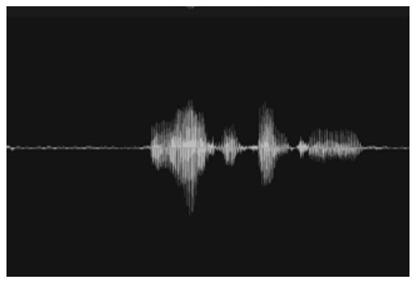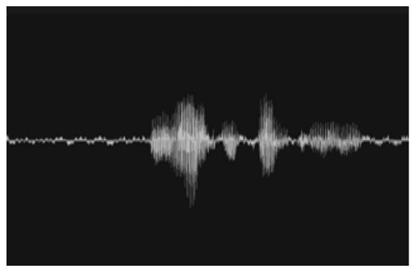Voice noise reduction method and device and terminal equipment
A technology for speech noise reduction and speech data, applied in speech analysis, speech recognition, instruments, etc., to solve problems such as inability to accurately transmit user information, noise interference, and reduction of speech recognition accuracy.
- Summary
- Abstract
- Description
- Claims
- Application Information
AI Technical Summary
Problems solved by technology
Method used
Image
Examples
Embodiment 1
[0044] Such as figure 1 As shown, this embodiment provides a speech noise reduction method, which can be applied to terminal devices such as mobile phones, PCs, tablet computers, and smart game consoles. The voice noise reduction method provided in this embodiment includes:
[0045] S101. Acquire first voice data and second voice data; wherein, the first voice data includes noise-free voice data; and the second voice data includes noise voice data.
[0046] In a specific application, a preset number of first voice data and second voice data is obtained for training the generative confrontation network; wherein, the preset number can be specifically set according to the actual situation, and it is required to meet the requirements for the generative confrontation network. training needs. The first voice data refers to real noise-free voice data. The second speech data refers to noise speech data (wherein, the noise speech data includes at least one type of sub-noise speech d...
Embodiment 2
[0061] Such as Figure 5 As shown, this embodiment is a further description of the method steps in the first embodiment. In this embodiment, step 103 includes:
[0062] S1031. Train a generator and a discriminator of the generative adversarial network according to the first speech data and the training data, and obtain a trained generative adversarial network model.
[0063] In a specific application, the training of the discriminator and generator of the generative confrontation network is realized according to the training data and the first speech data, so that the generator can generate more realistic noise-free speech data, so that the discriminator cannot judge the noiseless speech data generated by the generator. Authenticity of the noise voice data; discriminator learns the difference between the first voice data and the training data (i.e. noise-containing voice data), to discriminate the authenticity of the noise-free voice data generated by the generator, and retur...
Embodiment 3
[0070] Such as Figure 8 As shown, this embodiment is a further description of the method steps in the first embodiment. In this embodiment, step S104 includes:
[0071] S1041. Train the discriminator by using the speech recognition data to be processed.
[0072] In a specific application, the discriminator is trained by the speech recognition data to be processed, so that the discriminator can judge whether the speech recognition data contains noise.
[0073] S1042. If the discrimination result of the discriminator is that the speech recognition data to be processed contains noise, train the generator by using the speech recognition data to be processed.
[0074] In a specific application, if the discrimination result of the discriminator is that the speech recognition data to be processed contains noise, the generator is trained by the speech recognition data to be processed, so that the generator generates new speech recognition data to be processed (that is, relatively ...
PUM
 Login to View More
Login to View More Abstract
Description
Claims
Application Information
 Login to View More
Login to View More - R&D
- Intellectual Property
- Life Sciences
- Materials
- Tech Scout
- Unparalleled Data Quality
- Higher Quality Content
- 60% Fewer Hallucinations
Browse by: Latest US Patents, China's latest patents, Technical Efficacy Thesaurus, Application Domain, Technology Topic, Popular Technical Reports.
© 2025 PatSnap. All rights reserved.Legal|Privacy policy|Modern Slavery Act Transparency Statement|Sitemap|About US| Contact US: help@patsnap.com



